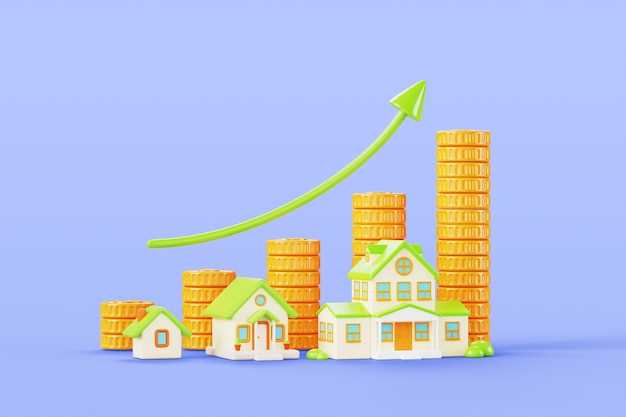Turkey, with its unique blend of Eastern and Western cultures, offers a fascinating landscape for property investments. The nation, rich in history and natural beauty, attracts both local and foreign buyers. However, many underlying variables shape the worth of these investments. Understanding these variables is key for anyone looking to invest wisely in this ever-changing market.
From bustling cities like Istanbul to serene coastal towns, each area presents its own set of challenges and opportunities. The interplay of these variables is complex. Employment levels, inflation, and even international relations all play their part. Given these complexities, the property market in Turkey serves as a compelling study in variability and resilience.
The Turkish property market does not operate in isolation. It is influenced by various internal and external elements. One must consider a multitude of factors to grasp the full picture. For example, a shift in currency exchange rates can make a significant difference in purchasing power. Likewise, government policies and incentives can either encourage or dissuade potential buyers.
Today’s investors must be more informed than ever. Awareness and adaptation are crucial for navigation. By delving into the subtleties, one can uncover patterns that might otherwise go unnoticed. This examination offers insights into a sometimes turbulent but often rewarding investment landscape.
Influence of Economic Dynamics on Turkish Property Values
The fluctuations in market conditions and fiscal indicators have a profound effect on property values in Turkey. These shifts can significantly alter the landscape for both potential buyers and sellers. Skipping from boom to bust and back, the costs of housing and commercial spaces can see dramatic changes. Such shifts aren’t just numbers; they reflect deeper trends. Consumers feel these changes almost immediately in their daily lives.
Various indicators, such as inflation rates and interest levels, play decisive roles. A spike in borrowing costs can dampen demand. Conversely, lower interest rates often boost market activity, as loans become more affordable. Government policies also come into play. Initiatives aimed at stimulating housing can sometimes lead to temporary spikes in property valuations. However, overregulation can also have a detrimental effect, stifling market growth.
Inflation remains a crucial determinant. When the value of money decreases, property values tend to increase. It’s a natural hedge against currency depreciation. Foreign investors often find refuge in tangible assets during turbulent times. This surge in foreign interest can raise values, especially in popular areas. However, not all regions experience these effects equally. Prime locations tend to benefit the most, while remote areas might lag behind.
Unemployment rates also carry weight. When joblessness rises, purchasing power diminishes. People become less likely to invest in new homes. But when employment is high, the confidence to invest grows. Moreover, economic stability can instill a sense of security that encourages long-term investments. The interplay between these diverse components forms a complex web. Understanding this web is essential for anyone involved in the property market.
Historical Context of Economic Changes
The transformation in financial dynamics over the years has been substantial. Key periods of reform have driven progress. Developments in policy often trigger shifts in market behaviors. These can be abrupt or gradual. They shape the nation’s financial landscape.
In the late 20th century, numerous shifts took place. Political stability played a crucial role. It generated confident investor sentiment. Furthermore, technological growth provided new opportunities. During this era, legislative changes also began to create ripple effects across various sectors.
Moving into the 21st century, globalization accelerated. Cross-border investments became more pronounced. This interconnectedness brought both opportunities and challenges. External shocks and global financial crises resonated domestically. Amidst these oscillations, adaptability became crucial. Stakeholders continuously adjusted to remain pertinent in an ever-evolving environment.
Through decades of political and social transformations, the nation has witnessed sweeping changes. These shifts are often interwoven with international trends. Observing historical patterns provides valuable insights. Understanding these movements enables a more nuanced perspective on financial trends today.
Key Economic Events Over Decades

Throughout the years, various significant happenings have influenced the Turkish market landscape. These moments shaped the financial and investment climate in the country, shifting trends and guiding decisions. Let’s delve into these notable instances that have defined different periods.
In the early 1980s, liberalization policies were introduced. These policies marked a shift from a more controlled system to a freer market. This transition opened up many opportunities. Foreign investors began to show interest in the nation’s ventures. It wasn’t just the private sector that benefited; public sector entities also saw new possibilities.
- 1980s: Introduction of liberalization policies, attracting foreign investments.
- 1994: Economic crisis leading to a significant devaluation of the Turkish Lira.
- 2001: Another financial crisis resulting in major banking reforms.
Moving into the 1990s, Turkey faced an array of challenges. The 1994 economic crisis was a pivotal moment. Severe currency devaluation occurred. Inflation soared. This period forced policymakers to rethink strategies, paving the way for technological advancements and regulatory reforms.
Turn of the millennium saw Turkey grappling with yet another crisis in 2001. This period was characterized by a meltdown in the banking sector. However, this adversity brought about stringent reforms. Institutions underwent significant restructuring. The resultant stability restored confidence among investors.
- 2002-2007: Period of economic stability and notable growth, known as the Turkish economic renaissance.
- 2018: Currency and debt crisis impacting various sectors.
The early 2000s were seen as a renaissance period. Between 2002 and 2007, the nation experienced robust growth. Stability and new reforms played key roles in this phase. The introduction of various policies during these years attracted worldwide attention and drove substantial growth.
Fast forward to 2018, and the landscape took another turn. The currency and debt crisis of that year had far-reaching implications. This era brought new challenges. Several sectors felt the strain. Yet, the resilience and adaptive nature of the nation’s market persisted, proving its strength in the face of adversity.
These landmark events, spanning several decades, highlight the dynamic nature of the market in Turkey. They underscore the importance of adaptability and continuous evolution in response to both domestic and global shifts.
Policy Shifts and Their Effects

Government policies play a significant role in shaping the landscape of the housing market. Changes in legislation can lead to dramatic shifts in demand and supply. Various policy adjustments, including those related to taxes and foreign investment, often leave a notable mark. This section delves into the specifics of these changes. We will examine how different measures influence the overall market dynamics.
- Tax Policies:Adjustments in property taxes can either discourage or encourage purchases. Lower taxes make acquiring properties more feasible, boosting buyer interest. Conversely, higher taxes might deter potential investors.
- Foreign Investment Regulations:Governing rules around foreign investments have a direct impact on the sector’s appeal. When restrictions are loosened, international buyers often flood the market. This influx can drive up demand and lead to substantial price increases.
- Subsidies and Incentives:Government incentives for local buyers can stimulate domestic investment. Subsidies can make housing more affordable for residents. On the other hand, if focused too narrowly, these measures could unintentionally inflate local property values.
- Construction Regulations:Policies that ease the process of construction can promote development. When regulatory barriers are reduced, new projects emerge, increasing supply. More homes mean greater options for buyers, potentially stabilizing market values.
It’s clear that these policy shifts create ripple effects across the housing sector. The aftermath of such changes can be felt for years. Some adjustments might seek to stabilize the market, while others aim to spur growth. Understanding these policy-driven dynamics provides deeper insight into the market’s evolving nature.
Long-Term Market Trends

In the context of property markets, we observe various long-lasting patterns. These trends often stretch over years or even decades. They are not easily swayed by short-term events or minor changes in the environment. Long-term patterns can be shaped by numerous elements, offering a more comprehensive view of the landscape. While short-term fluctuations capture immediate reactions, extended trends offer deeper insights.
- Urbanization: In burgeoning cities, urbanization is a major driver. People flock from rural areas to urban centers seeking better opportunities. This population shift impacts demand for housing, often pushing it higher. Over several years, cities expand, and neighborhoods evolve.
- Infrastructure Development: Infrastructure projects take years to complete. New roads, bridges, and public transport networks can transform regions. Initial disruptions might unsettle markets, but long-term benefits are substantial. Improved connectivity enhances the appeal of peripheral areas, leading to price appreciation.
- Demographic Shifts: Population aging or changing family structures influence the types of homes needed. An older population might favor downsizing to smaller residences, while younger families prefer larger homes. Demographics shape demand patterns in different ways over extended periods.
- Political Stability: Stability on the political front fosters confidence among investors. Consistent policies and governance reduce uncertainty. This promotes sustained growth, attracting both domestic and international investments. Over time, a stable political environment nurtures a healthy market.
- Technological Advancements: Innovations in technology redefine living spaces. Smart homes and energy-efficient buildings are becoming popular. As technology evolves, it influences both construction practices and buyer preferences. This shift can significantly alter the landscape over years.
- Cultural Preferences: Society’s value system plays a role. Cultural shifts, such as increased environmental awareness, change buying behaviors. Preferences for green spaces, sustainable living, and community-centric developments gain popularity. These cultural shifts mold market tendencies over time.
These elements collectively create a dynamic environment. They interact, overlap, and sometimes conflict with each other. Understanding them provides a nuanced perspective on the market. While no single element can offer definitive conclusions, together they paint a comprehensive picture.
Current Economic Indicators
Understanding various indicators is crucial for grasping the current state of the market. These indicators provide insight into trends and potential future movements. By examining specific metrics, one can make more informed predictions. For those invested or contemplating investment, keeping an eye on these is beneficial. We’ll explore several key metrics that are particularly relevant. Now, let’s dive into the specifics.
One of the most watched metrics is inflation. It affects purchasing power significantly. In recent years, inflation rates in the country have been volatile. Such volatility can create uncertainty for both buyers and sellers. High inflation often leads to higher costs. Conversely, controlled inflation can stabilize the marketplace and foster growth.
Another critical indicator is the interest rate environment. Central banks play a pivotal role here. They adjust rates based on numerous underlying conditions. A lower rate can stimulate borrowing and spending. Conversely, higher rates can have a cooling effect on the market. Keeping track of rate changes is vital for anyone watching market trends.
| Indicator | Current Value | Impact Summary |
|---|---|---|
| Inflation Rate | 21.7% | High inflation diminishes purchasing power and increases market costs. |
| Interest Rates | 14.0% | Lower rates encourage borrowing; higher rates can restrain spending. |
| GDP Growth | 6.5% | Robust GDP growth indicates a thriving economy and growing prosperity. |
| Unemployment Rate | 11.2% | Higher unemployment can diminish consumer spending power. |
GDP growth is another central metric. Positive GDP growth suggests an expanding economy. It reflects increased production and consumption. A flourishing economy can lift multiple sectors. Consistent growth can boost confidence among investors and residents. On the other hand, stagnant or negative growth signals underlying issues.
Unemployment rates also play a significant role. High unemployment can lead to lower disposable incomes. This could result in reduced spending across various sectors. By contrast, lower unemployment often indicates healthier economic conditions. It means more people have wages to spend, which can uplift market activities.
Lastly, it’s vital to monitor external influences such as global market trends and geopolitical events. These can have indirect but substantial effects on the market. Exchange rates, in particular, are worth watching. They can impact both local and international investment flows.
In conclusion, understanding these specific metrics can provide a clearer picture. It helps in making educated assumptions about future trends. Always stay informed and consider multiple indicators. Ignoring them could lead to missed opportunities or unforeseen challenges. Stay vigilant and keep tracking the key numbers.
Inflation Rates and Property Prices
Understanding the relationship between rising costs and property values is crucial. This connection can reveal patterns and trends in the housing market. Over time, inflation can significantly influence the buying power of potential homeowners. Consequently, these shifts affect how those in Turkey perceive property investments. Recognizing the extent of these changes can provide valuable insight for prospective buyers and sellers alike.
Several aspects illustrate the link between inflation and home values:
- Consumer Purchasing Power:When inflation spikes, the value of currency declines. This situation means that consumers can afford less with the same amount of money.
- Construction Costs:As the prices for materials and labor rise, the cost to build new homes increases. Higher construction costs often lead to an increase in selling prices for new properties.
- Interest Rates:Central banks may alter interest rates to control inflation. Higher rates can make mortgages more expensive, which might reduce demand for homes.
- Investor Behavior:Inflation can compel individuals to seek assets that historically retain value, like property. Such behavior can drive demand upward, impacting the housing market.
Additionally, different regions experience varying degrees of inflation, affecting property values in uneven ways. In metropolitan areas, properties might see a sharper rise in value due to heightened demand and development costs. Conversely, rural areas may notice less dramatic changes. Economists often monitor these disparities to understand broader market trends and make informed predictions. This nuanced landscape underscores the importance of localized knowledge when navigating property investments in Turkey.
Unemployment Rates and Real Estate
Employment levels have a close relationship with housing market dynamics. When fewer people are out of work, the housing market tends to be stronger. On the contrary, high unemployment often leads to a weakened market. Job stability influences people’s ability to buy homes. It affects their confidence about taking on mortgages.
When joblessness rises, potential buyers may hold off on purchasing. They might worry about affording payments or losing their homes. Consequently, the demand for houses can drop significantly. Sellers might have to lower their asking prices to attract buyers. This decrease in demand can stagnate the market.
Jobs are crucial for the economic well-being of individuals and families. Stable employment often translates to stable housing markets. Areas with low joblessness usually see more people buying homes, leading to higher property values. However, when unemployment spikes, it can start a chain reaction. Many people might struggle, which can dampen the market’s overall performance.
Mortgage lenders also become more cautious during periods of high joblessness. Banks may tighten lending criteria, making it harder for people to qualify for home loans. This restriction further reduces the number of buyers in the market. Sellers, consequently, may face more challenges in finding interested buyers.
The link between employment and the housing market is undeniable. As jobs shrink, so do housing transactions. Both developers and individual sellers might struggle. On the flip side, rising employment levels can breathe new life into the housing sector. Thus, the job market plays a significant role in shaping housing trends and valuations.
Foreign Investment Influences
Foreign investment plays a significant role in the overall housing market. These investments can affect the availability and cost of properties. When investors from abroad purchase homes, it can lead to various changes. Sometimes, this boosts local sectors related to housing. Moreover, it affects local buyers directly.
International buyers often look for homes in desirable areas. This might include coastal regions or major cities. Such demand increases competition among buyers. As a result, higher offers become commonplace. Consequently, this can alter the local market dynamics.
Moreover, government policies come into play. For instance, laws can either encourage or limit foreign investments. Some policies offer incentives to attract international funds, while others impose restrictions to safeguard local interests. Each of these scenarios can lead to different outcomes within the marketplace.
| Country | Investment Type | Effect on Market |
|---|---|---|
| Germany | Residential Properties | Increased Demand |
| Russia | Commercial Properties | Market Diversification |
| United Arab Emirates | Luxury Homes | Higher Costs |
Another aspect to consider is currency exchange rates. When a nation’s currency is strong, its residents might invest abroad. Conversely, a weaker currency may deter international buyers. Fluctuations in currency rates can have a significant impact on cross-border transactions.
Furthermore, cultural factors influence buyer preferences. Investors might seek properties that align with their cultural values or business goals. This diversity can lead to niche markets developing within a region.
Lastly, global events also play their part. Economic downturns, political stability, and international relationships all contribute to shaping foreign investor behavior. These varied influences combine to create a complex, ever-changing landscape for the housing sector.
In recent years, many industries in the service and entertainment sectors have increasingly transitioned online, driven by changing consumer preferences and advancements in digital technology. This shift has also led to a decline in demand for physical spaces like real estate and offices. Recognizing this trend, most casinos now operate online platforms to meet the evolving needs of their audiences. BetorSpin is no exception, offering a cutting-edge online platform that provides a seamless and convenient gaming experience, ensuring players can enjoy their favorite games anytime, anywhere.
Understanding these dynamics is crucial for both sellers and buyers. They must stay informed to navigate the complexities of international investments. Recognizing patterns and adapting to changes can offer significant advantages in the competitive property market.
Video:
Property Prices Slashed In Turkey | Real Estate Market Slump In Istanbul | Exclusive News
Property Prices Slashed In Turkey | Real Estate Market Slump In Istanbul | Exclusive News by Saghir Ramay Official 7,248 views 8 months ago 9 minutes, 13 seconds
Q&A:
What are the main economic factors that impact real estate prices in Turkey?
The main economic factors that impact real estate prices in Turkey include inflation rates, interest rates, foreign exchange rates, economic growth, and government policies. Inflation can erode the purchasing power of consumers, affecting their ability to invest in real estate. Interest rates influence the cost of mortgage loans, thereby affecting demand for property. Fluctuations in foreign exchange rates can make Turkish real estate more or less attractive to foreign investors. Economic growth generally leads to higher demand for real estate, while governmental policies such as tax incentives or restrictions can also significantly influence prices.
How do inflation rates affect real estate prices in Turkey?
Inflation rates have a direct impact on real estate prices in Turkey by reducing the purchasing power of potential buyers. As inflation rises, the cost of goods and services, including construction materials and labor, also increases, leading to higher property prices. On the flip side, if inflation is too high, it can reduce consumer confidence and spending power, which may cause a decrease in demand and potentially lower property prices in the short term.
In what way do foreign exchange rates influence the Turkish real estate market?
Foreign exchange rates play a crucial role in influencing the Turkish real estate market, especially since Turkey attracts many foreign investors. When the Turkish lira weakens against major currencies like the US dollar or the euro, real estate in Turkey becomes more affordable for foreign buyers, potentially driving up demand and prices. Conversely, a strong lira can make Turkish real estate more expensive for foreign investors, which may reduce demand and stabilize or even lower property prices.
Can government policies directly impact real estate prices in Turkey?
Yes, government policies can directly impact real estate prices in Turkey in various ways. Policies such as tax incentives for first-time homebuyers or foreign investors can increase demand and drive up prices. On the other hand, regulatory measures like stricter zoning laws, caps on rent increases, or property taxes can affect the supply and demand dynamics, potentially leading to price stabilization or decline. Additionally, broader economic policies aimed at controlling inflation or interest rates can also indirectly influence the real estate market.
How does economic growth correlate with real estate prices in Turkey?
Economic growth is positively correlated with real estate prices in Turkey. As the economy expands, employment rates and household incomes generally rise, increasing the purchasing power of consumers and their ability to invest in real estate. Economic growth also often leads to urbanization and infrastructure development, which can make certain areas more attractive for living and business, further raising property values. Sustained economic growth creates a favorable environment for real estate investment, leading to higher demand and, consequently, higher property prices.



